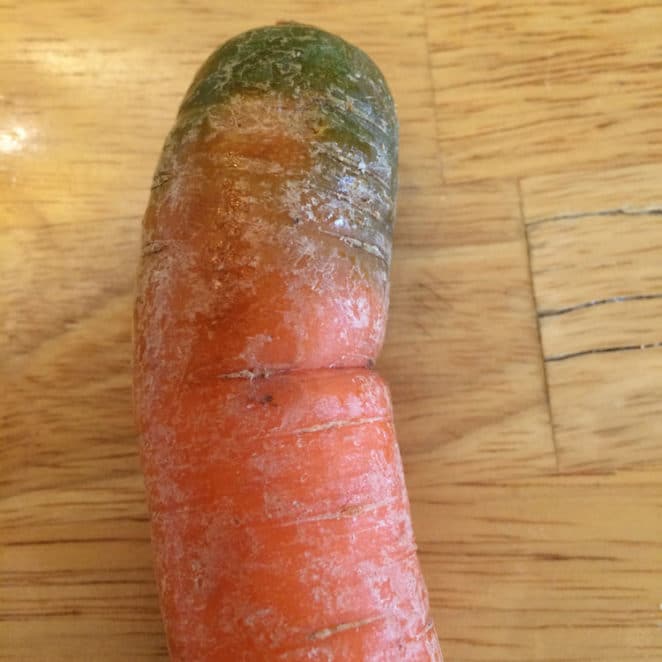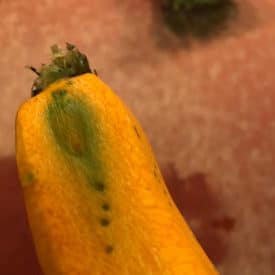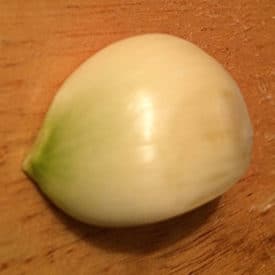
What you see: The top of the carrot root, just before the leaves, is green.
What it is: The carrot was likely exposed to the sun, causing chlorophyll to develop and color the flesh green.
Eat or toss? The orange part of the carrot is fine; as for the green top, it’s said to not taste so great, so go ahead and chuck it in the compost.
What’s the green patch on top of some carrots?
I turn red when I get a sunburn, but I learned today that carrots turn green…and remain mostly edible! Yep, this is called “sunburning” and happens, obviously enough, when the root is exposed to the sun and develops chlorophyll.
Can you eat a “green” carrot?
This isn’t a serious issue, and UN agriculture guidelines even allow for some green tops in produce they consider to be “good quality” (but not “superior quality”). If you’re having this issue with carrots you’re growing yourself, simply making sure the dirt covers the top should do the trick. As for eating, the green tops may not taste as good. They could be bitter. Sample a bit and determine if you’d like to lop off the green area or just include the whole carrot in your dish.
Is it safe to eat a carrot with a green area?
If you’re thinking to yourself, but green potatoes can be poisonous, so isn’t it possible that carrots, which, like potatoes, are roots, are poisonous when they turn green? It’s a good question, but the answer is no. In both cases, the green comes from harmless chlorophyll, but in potatoes, that harmless chlorophyll develops alongside something much more sinister—a substance called solanine, which can cause diarrhea, vomiting and even mess with the central nervous system. But, fortunately for Bugs Bunny and the rest of us, green in carrots does not signal solanine.
SOURCES:
- University of Illinois Extension – Watch Your Garden Grow – Carrot
- University of California – Davis – Good Life Garden – Carrots
- UNECE Standard – Carrots
What’s up with this carrot, doc?
Updated January 2024











